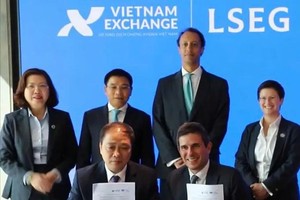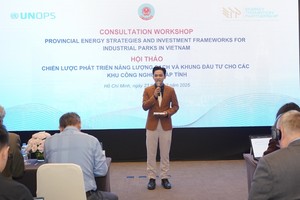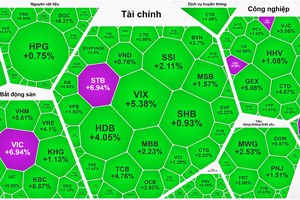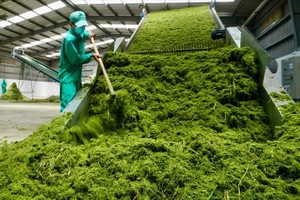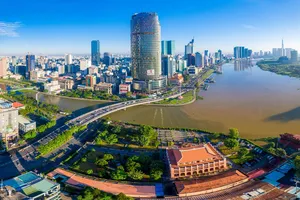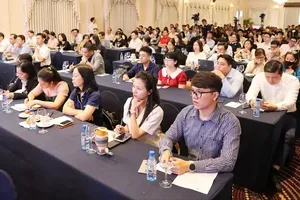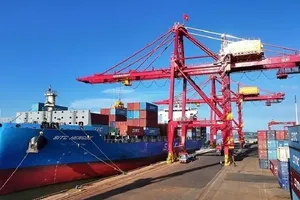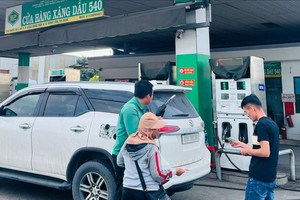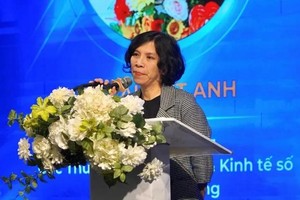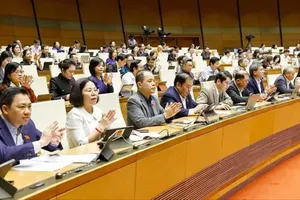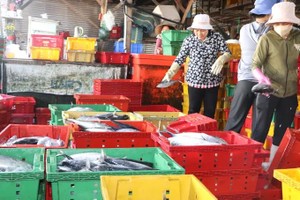
According to the VRC, after being transferred to the Commission for the Management of State Capital at Enterprises (CMSC) for more than a year, its business result was not as optimistic as expected. At the headquarter, revenue nearly reached VND2.4 trillion, equal to 93 percent over the same period and 97 percent compared to the plan. The revenues of transport companies also merely exceeded VND4.2 trillion, equal to 98.7 percent of the same period and 92 percent of the plan. Although transport companies have zealously sought and exploited new goods and launched new products, they were unable to make up for a slump in their traditional goods, such as apatite, fertilizers and cement. For some old goods, including wood, coal and fuel, they have lost their customers.
As for passenger transport, the seat occupancy coefficient was low and dropped compared to the same period. Meanwhile, the situation of railway traffic safety was still complicated. Although the number of cases, deaths and injuries by railways accidents declined compared to the previous year, it was still at a high level with several unfortunate accidents happening at level crossings, causing displeasure in the society.
Mr. Vu Anh Minh, Chairman of the VRC, said that the business result of the railway industry faced several difficulties last year as the plan to restructure the company during the period from 2017 to 2020 has not been approved by the Government. The shortcomings in organization and management have not been tackled, especially amongst the transport sector, leading to internal competition and creating many complex operations. Besides, financial problems relating to the land leases of property at 31 Lang Ha Street and 551 Nguyen Van Cu Street in Hanoi were also the reason that dragged down its business performance. A worrisome consequence that directly affects the business efficiency of the corporation was that the recruitment of human resources for the operation of trains has become more and more difficult, even enrollment for job placement failed to ensure the target.
Ms. Nguyen Thi Phu Ha, Vice Chairwoman of the CMSC, admitted that internal difficulties of the railway industry and problems in the mechanism that have not been resolved have led to poor business performance of the industry. The commission has collaborated to promote business result but as the time was short and the depth of the professional skills of the commission was not enough, it has not made more positive impacts on the VRC.
This year, the VRC has put forward many measures to promote growth, in which, it will pay special attention to freight transport activities. Firstly, the VRC will build a suitable train schedule to increase exploitation efficiency while continuing to carry out the construction of important projects to raise its capacity and safety, using the package of VND7 trillion from the reserve fund of the medium-term investment plan from 2016 to 2020. Moreover, the restructuring project will be implemented immediately after it is approved. Soon, the VRC will continue to explain to the Government to receive the approval for the National Railways Infrastructure Management Project invested by the State.
However, according to Mr. Vu Anh Minh, the most urgent need of the railways is to change the mindset of both people in the industry and the society about the railways. He said that the railway industry needs to adjust short-term goals to long-term ones then it will be able to help to lower logistics costs and improve the national competitiveness as the expectation of the Government, enterprises and people. In fact, other types of transportation such as water, air and land, all have a part of the infrastructure, including ports and stations, belonged to enterprises. The railways alone, its infrastructure and stations all belong to the State. For instance, according to the calculation of the VRC, if the State invests VND30 billion in the Song Luy Railway Station, it might collect VND200 billion annually. However, the State does not have money to make investment while enterprises are not allowed to invest. That is a big knot that needs untying.
Ms. Nguyen Thi Phu Ha said that the business targets of the VRC this year will be built completely by the CMSC next week. In order to achieve these targets, the CMSC proposed the Ministry of Transportation to support the VRC to soon promulgate the Railways Infrastructure Management Project and supplement suitable mechanism and policies for the railway industry to improve competitiveness to have ground to build a more accurate and feasible five-year plan from 2021 to 2025.

